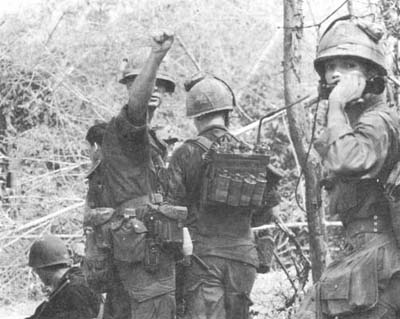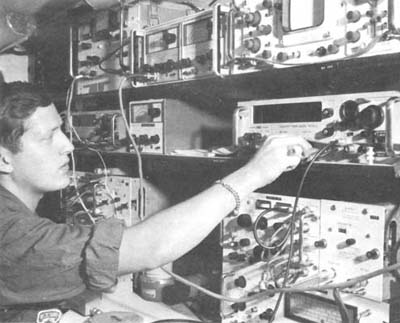According to an ancient military axiom, “Without intelligence, one is vulnerable; without security, one is defenseless.” U.S. cryptologists had a long and difficult mission trying to deny information to the enemy from its own and South Vietnamese communications!!
Just as there was a long history of providing in-country SIGINT support during the Vietnam War, there was also an equally long history of providing communication security (COMSEC) monitoring to improve the communications security of U.S. military advisers.
Sometime in 1960, at the prompting of his signals officer, Major General Charles J. Timmes, chief of the Military Assistance Advisory Group Vietnam (MAAG-V), asked the Army Security Agency (ASA) to help maintain secure communications for his men. In late 1960, ASA’s 104th Detachment, which consisted of 6 personnel, went TDY to South Vietnam to monitor MAAG-V communications. This small detachment arrived in-country several months before the arrival of the 3rd Radio Research Unit (RRU), the first SIGINT unit in South Vietnam, in May 1961.
The detachment identified numerous violations and problems. For example, some soldiers had never used a one-time encryption pad during their entire tour in Vietnam. As a result of these findings, Colonel Robert T. Walker from ASA Pacific issued cryptographic equipment to MAAG-V elements and recommended procedural changes in the transmission of messages. Walker also established control over the assignment of callsigns and frequencies.

In February 1962 the 3rd RRU received authorization to establish its own COMSEC mission. When the 104th Detachment completed its TDY and departed South Vietnam in March 1962, it left its equipment for the benefit of the 3rd RRU. Thus, the 3rd was able to deploy mobile COMSEC monitoring teams; the first of these teams was sent to Da Nang.
O March 1, 1963, the 7th RRU was organized; its mission was solely COMSEC. The 7th RRU depended on the 3rd RRU for administrative and logistical support, but had its own separate mission. As the U.S. military commitment to South Vietnam grew, ASA provided more COMSEC support. In a few short years, ASA COMSEC support grew from a small detachment to a separate organization for the COMSEC problem. As the number of army troop expanded, the COMSEC organization eventually grew to battalion strength.
ASA was the first Service Cryptologic Agency to establish COMSEC support for the U.S. military in South Vietnam because it was the first to send personnel in country. However, COMSEC support became an integral part of the duties of all Service Cryptologic Agencies during the Vietnam War.
Source: NSA (FIOA Case #80187)


1 August 2019 at 10:08
Did not know this, very interesting. Thanks.
LikeLike
1 August 2019 at 21:31
Thank you!
LikeLike
1 August 2019 at 21:32
davidstephen72@gmail.com
LikeLike
2 August 2019 at 15:02
I worked COMSEC in San Diego in 1969-70, and we were training up the ships heading to Viet Nam. A couple of uor Chiefs had done a COMSEC study on one of the various “hunter-killer” ops the Army and Navy ran and found that they could predict operations as much as 2 days in advance.
When we worked the various fleet exercises, our reports were usually restricted to either Good or Bad COMSEC, no details, nothing. We did write extensive reports after the exercises, but we never saw any improvement in the COMSEC posture as these units were getting ready for ‘Nam.
They did come up with the old “Bead window #” codeword, I sent the first one during an Amphib exercise, but they later turned it into something that radio operators did to warn others on the net. In 1973-74, the reserve unit in Chicago was able to keep track of the aviation operations off Norfolk by monitoring a couple of channels they could hear early in the morning – we had as many as 20-25 days of coverage and could tell you who was out working up, which squadrons, and what they were doing each day.
I did get a personal “attaboy” from then CAPT Gravely on the USS Jouette for the pre-deployment briefings I did on the ship – he understood COMSEC and became COMNAVCOM.
rsl
LikeLike